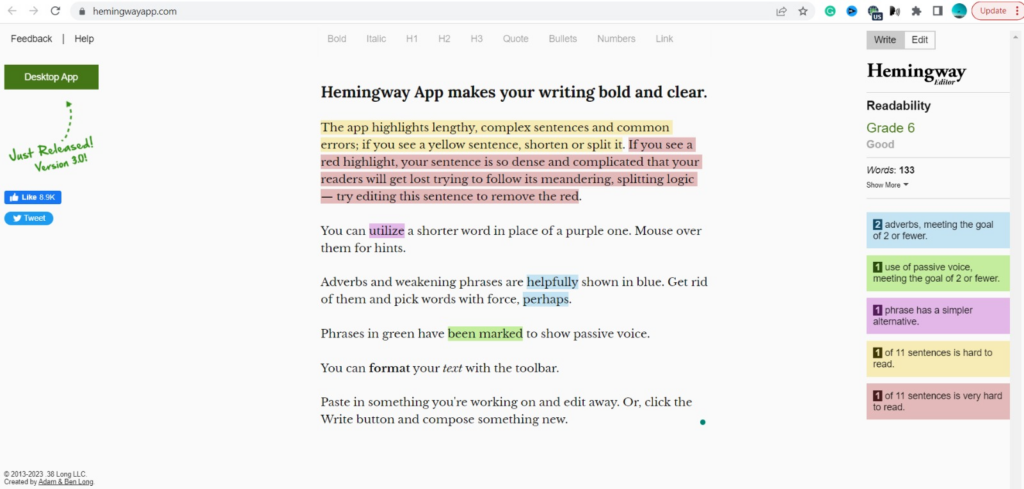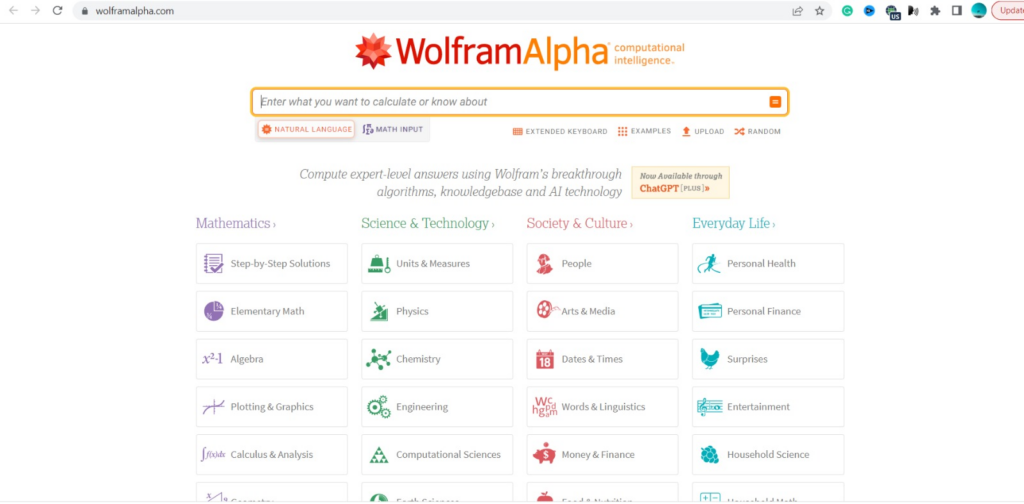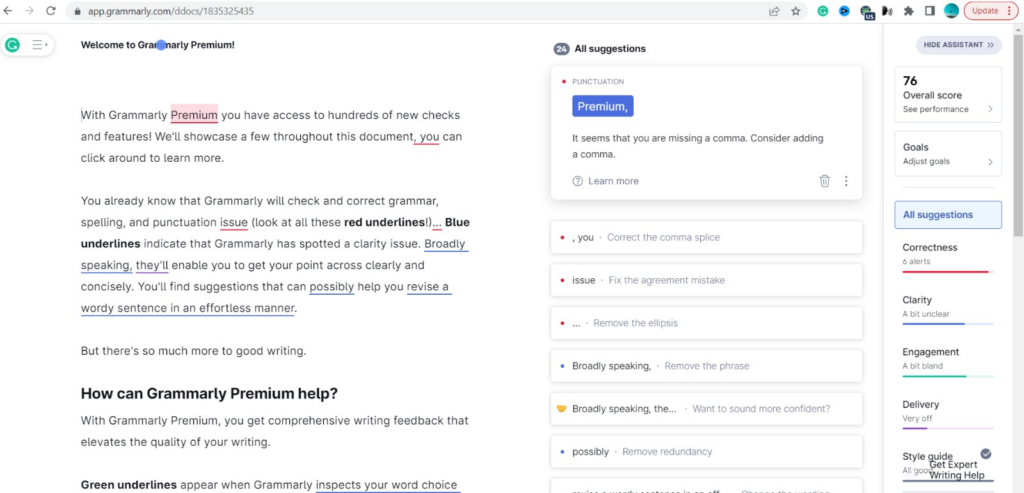The competition in the writing market is getting harder and harder every day. As per reports, there are 252,000 new websites and 7.5 million blog posts published on a daily basis. And this is hardly even surprising. So, if you want to stand out in these competitive times, you must have tips and strategies up your sleeves.
Oh, you’re already looking for them? Look no further! In this blog post, we will cover everything from the content writing process and style to how to create quality evergreen content. So, without further ado, let’s dig in!

Tips for Effective Content Writing
Hereunder, we’ve enlisted some of the most effective topics to help you create compelling content. So, let’s go through them one by one.
Before beginning any piece of writing, make sure you have a thorough understanding of the topic at hand so that you can effectively communicate its main points in an organized manner without leaving out important details or providing inaccurate information.
It may be helpful to do some additional research if necessary or even consult experts in the field before getting started to avoid missing anything crucial while writing about it.
Writing quality content takes time but is well worth the effort; readers are much more likely to engage with thoughtful pieces than those filled with fluff or written hastily just to put something out there quickly.
Therefore, instead of rushing through articles to produce multiple pieces per day, take extra care over each one so as not only to attract attention but also to keep people interested in what else you have to say
Every writer has their own unique voice, which should come through clearly within their work; this helps create an individual style that makes reading enjoyable as well as memorable for readers who come back again expecting similar experiences from future posts too.
Plus, aiming for consistency across different types of content (blog posts vs. social media captions, etc.) can also help build trust between yourself and your followers by showing them what kind of person/brand they’re dealing with every time they interact with your material online – no matter where it appears.
Adding visuals such as images, videos, infographics, etc., can go a long way towards making any piece stand out from others on similar topics by adding visual interest into otherwise text-heavy pages.
Plus, these elements often act like magnets drawing viewers’ eyes straight away rather than having them scroll down looking for something interesting before deciding whether they want to stay longer.
Repetition can be a killer for content marketing and website owners. Overusing words in your text will make it monotonous and uninteresting to read. Fortunately, there are some great tools available that can help you avoid this mistake.
WordItOut is an easy-to-use tool that quickly reveals which words are used most frequently in your text. All you have to do is paste the text into the tool, and it will generate a word cloud showing the words used most often at larger sizes than those less frequently used.
This allows you to easily identify any redundancies or overused words so that you can replace them with something more interesting and engaging for readers.
Another helpful tool is Word Counter which detects when certain words are being repeated too often throughout your writing. This gives you an idea of what needs to be changed so that readers don’t become bored by seeing the same thing over and over again.
To get around this problem, try using Thesaurus.com to find alternative phrases or synonyms for common words to keep things fresh and exciting while still getting your point across effectively without repeating yourself too much.
Ultimately, if all else fails, bear in mind the adage: “Write as you would speak.” Individuals tend to utilize a variety of phrasing when conversing compared to writing. Use this by incorporating idioms or slang into your work where applicable; these expressions add character and make texts more accessible for readers who may not be familiar with technical terminology or intricate phrases immediately.
Active voice is an essential tool for content marketers, entrepreneurs, bloggers, social media managers, and website owners. It’s a powerful way to make your writing more direct and engaging. With active voice, the subject of the sentence does the action; with passive voice, something happens to someone or something else.
For example, Active Voice: “I wrote a blog post.”
Passive Voice: “A blog post was written by Me.”
Using active voice makes it easier for readers to understand what you’re saying and keeps them engaged in your message. Active sentences are also shorter than passive ones because they don’t require extra words like “by” or “was done by,” which can clutter up your text and make it harder to read.
Additionally, using active language gives you more control over how your message is conveyed – it’s easier to be persuasive when you use strong verbs that evoke emotion in readers. Therefore, content marketers should strive to write in a vibrant tone as much as possible when crafting copy for their websites or blogs.
For instance, instead of saying, “our team conducted a survey,” try saying, “our team conducted a survey” – this emphasizes who did the action rather than just describing what happened passively. Similarly, avoid phrases such as “it was decided that…”, opting instead for something like “we decided…” which has more impact and clarity.
When it comes to content marketing, knowing your audience is key. You need to be aware of who you’re trying to reach and what type of language they respond best to for your message to be effective.
For example, if you’re targeting a younger demographic that spends most of their time online, then using more modern terms and slang can help grab their attention quickly. On the other hand, if you’re targeting an older demographic that doesn’t use social media as much, then using more traditional words and phrases may be better suited for them.
Another great way to get a feel for who your target audience is by researching similar blogs or websites within your niche and seeing which ones have been successful with engaging readers over time. This can give insight into what types of content work well with certain demographics and why those pieces have resonated with people so strong compared to others on the web today.
Additionally, looking at comments left by readers gives valuable feedback regarding what topics they find interesting enough to engage further discussion around or even suggest new ideas related back to the original post itself, allowing marketers to tailor future posts based on popular demand from followers.
Spelling Errors
A common mistake when writing is spelling errors. It’s important to take the time to double-check any words that may not look right or sound familiar before submitting them in an article or blog post.
Many people rely on autocorrect tools like Grammarly, which can help catch any misspellings quickly, but nothing beats reading through your work thoroughly before publishing it online.
Grammatical Errors
Grammatical errors are also something to watch out for when writing, as they can easily confuse readers or detract from the overall quality of your content. Make sure each sentence has a subject-verb agreement so there isn’t any confusion about who is doing what in your text.
Additionally, use punctuation correctly, such as commas where needed and apostrophes where appropriate – this will ensure clarity throughout your piece.
Punctuation Usage
It’s also important to understand when certain punctuation marks should be used to avoid making mistakes that could lead readers astray or give off an incorrect tone entirely.
For example, using exclamation points sparingly, as too many might come across as aggressive, whereas using question marks appropriately will show curiosity without being overly forceful. Both of these things are key depending on the context of what you’re trying to convey.
Adding humor to your writing can be a great way to capture attention and keep readers engaged. Try using jokes or anecdotes related to your topic as an icebreaker or lighten up difficult topics by adding humorous analogies or puns.
But don’t go overboard with it, as an excessive amount of comedy can detract from the core point of your piece.
Including external links to other websites and blogs can enhance the value of your content for readers, but ensure that it is only done when appropriate and not just for SEO reasons. Make sure that you only link out when it adds something valuable – don’t just do it for SEO purposes. Also, always double-check each link before publishing so that none of them lead visitors astray.
Don’t let grammar rules limit how conversational you want your text to sound. Prioritize readability over strict grammatical correctness – people will appreciate being able to easily understand what you’re trying to say more than perfect sentence structure every time.
Varying sentence lengths helps keep things interesting while also making complex concepts easier for readers to digest. Short sentences work well when introducing new ideas, while longer ones are better suited for elaborating on those same points without getting too wordy.
Before beginning any project, try sketching out an outline first. This will help organize all of the thoughts in your head into one cohesive piece of writing so nothing gets left behind or forgotten about during the actual drafting process later on down the line.
Including quotes from experts in fields related to yours shows authority and adds extra weight behind whatever point you’re trying to make with each post. Plus, they often act as shareable snippets that others may find useful enough to spread around their own networks if given enough incentive, such as offering freebies.
Content Writing Tools
Writing Tools
When it comes to content writing, having the right tools is essential for success. There are a variety of options available that can help you create compelling copy quickly and efficiently. Some of the most popular writing tools include Grammarly, Hemingway Editor, Google Docs, Microsoft Word, Evernote, Quip, and Scrivener.
Each one offers different features that make them ideal for different types of writers or projects – from basic grammar checks to full-fledged outlining capabilities – so be sure to do your research before settling on any one tool in particular.

Editing and Proofreading Tools
Once you’ve written your content piece, it’s important to ensure its accuracy by running it through an editing and proofreading tool, such as ProWritingAid or PerfectIt 3 Professional Edition.
These tools will scan your text for potential errors like typos or grammatical mistakes while also providing helpful suggestions on how to improve readability with better sentence structure or word choice recommendations.
They can even help you identify overused words so you can replace them with more interesting alternatives.

Research Tools
To write effective content pieces that engage readers, thorough research is key – but this doesn’t have to be a tedious process if you use the right resources. Popular research tools include Google Scholar (for academic papers), Wolfram Alpha (for scientific data), and BuzzSumo (for trending topics).

Additionally, there are plenty of online databases where you can find reliable sources, such as JSTOR or Project Gutenberg, which offer access to millions of books at no cost.
Readability Test Tool
HubSpot’s Readability Test Tool is a great way to ensure your writing is easy for readers to understand. It grades your work on a scale of 1-100 based on sentence length and complexity. The higher the score, the more easily understood it is for readers.
Grammar Checking Tool
Grammarly provides automated grammar checks for spelling and punctuation errors to help you produce error-free work every time you write something new or edit existing content.

Plagiarism Checking Tool
Unicheck verifies originality before publishing online by comparing it with other sources across the web; this helps prevent plagiarism and copyright infringement issues from occurring down the line.

Word Count Checking Tool
WordCounter allows writers to easily meet their word count goals while improving vocabulary choices within an article; its built-in dictionary feature ensures words fit into context without sounding awkward or unnatural when reading aloud or skimming through quickly.

These tools provide invaluable assistance in creating high-quality content quickly and efficiently, all while avoiding common pitfalls such as grammatical errors or plagiarism. With them at hand, even novice writers can create professional-looking articles that will easily engage readers.
Importance of Consistency in Content Creation
Consistency is paramount when crafting quality content that resonates with target audiences on various platforms. Gaining authority in one’s niche boosts the likelihood of gaining more leads, which can eventually convert into customers; this necessitates researching topics relevant to one’s business needs to be able to articulate them skillfully without appearing as an amateur trying too hard.
As per this report, content creation is a top priority for 80% of marketers. So why does consistency matter? Audiences require faith in the source of their knowledge to rely on it. When a reader or viewer visits your site, they are searching for an answer to their inquiry or a resolution to their issue.
By delivering useful, reliable content that satisfies your audience’s needs, you can foster trust and loyalty in your brand, which will bring them back for more. This builds brand loyalty which is invaluable for any business hoping to increase its customer base over time.
Although crafting top-notch content necessitates a commitment of time and energy, yet it is achievable with the correct methods and techniques. To start, research relevant topics related to your niche so you know what questions people are asking and what solutions need addressing.
This knowledge should inform how you structure your writing process from start to finish: from keyword research all the way through proofreading before publishing final content online (or elsewhere). Additionally, keep paragraphs short while using active voice whenever possible – this helps hold the reader’s attention until the completion of the reading material at hand.
Crafting Compelling Angles That Get Traffic To Your Site
Crafting compelling angles that get traffic to your site is essential for content creators and marketers. Having a unique angle can help you stand out from the competition and draw in readers, leading to more website visits and potential customers.
To create an effective angle for your content, consider strategies such as standing out from the competition and drawing in readers to drive traffic to your site. The importance of a compelling angle cannot be overstated when it comes to getting traffic to your site.
Curate Topics that Resonate with Your Audience
It’s important for content writers and marketers alike to create an engaging narrative around their topic or product, one that draws readers in with its uniqueness. To do this, research skills are paramount; staying up-to-date with current trends and events can provide great ideas for creating an interesting angle.
Additionally, researching frequently asked questions about topics related to yours can give you insight into what people want answers for—and, thus, what they’re looking for when reading content online.
Simplify the Process and Give Examples
Creating step-by-step processes with examples helps readers understand how they can implement what you’re discussing in their own lives or businesses. Providing knowledge through easy-to-follow steps allows them to learn and apply it directly after reading the article or post.
Furthermore, adding personal experiences gives authenticity, while emotional marketing appeals more easily than technical information alone as it makes the reader feel understood on a deeper level rather than just giving facts without any connection whatsoever.
Structurize Your Content
When writing content, keeping paragraphs short is key as longer ones tend to bore readers quickly, losing their attention altogether if too much time passes by without anything new being said, which means no clicks.
Understand Your Audience
Additionally, targeting grade levels according to who is your target audience ensures that everyone understands the message clearly while using idioms and colloquialisms to make it relatable, making them smile along the way.
Use SEO Techniques
Finally, SEO keywords should be included so search engines know exactly where each piece of written material belongs, resulting in higher ranking, which leads back full circle into increased website visits from interested viewers who found you via those same search engine queries.
FAQs Related to Content Writing
Conclusion
Creating compelling content is essential for anyone in the field of content marketing, entrepreneurship, blogging, or social media management. It can be difficult to craft compelling angles and write blog posts that resonate with your audience.
Yet, if you employ the correct approaches and instruments – for instance, appreciating consistency in content formation – then you can raise your chances of succeeding in producing compelling pieces that are both captivating and informative.